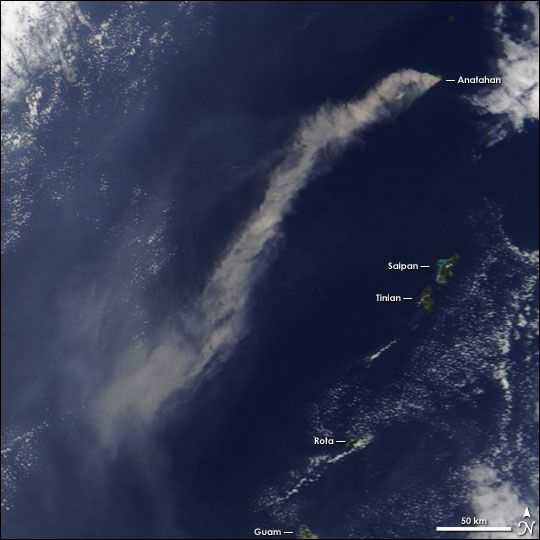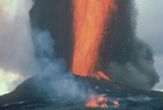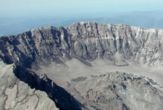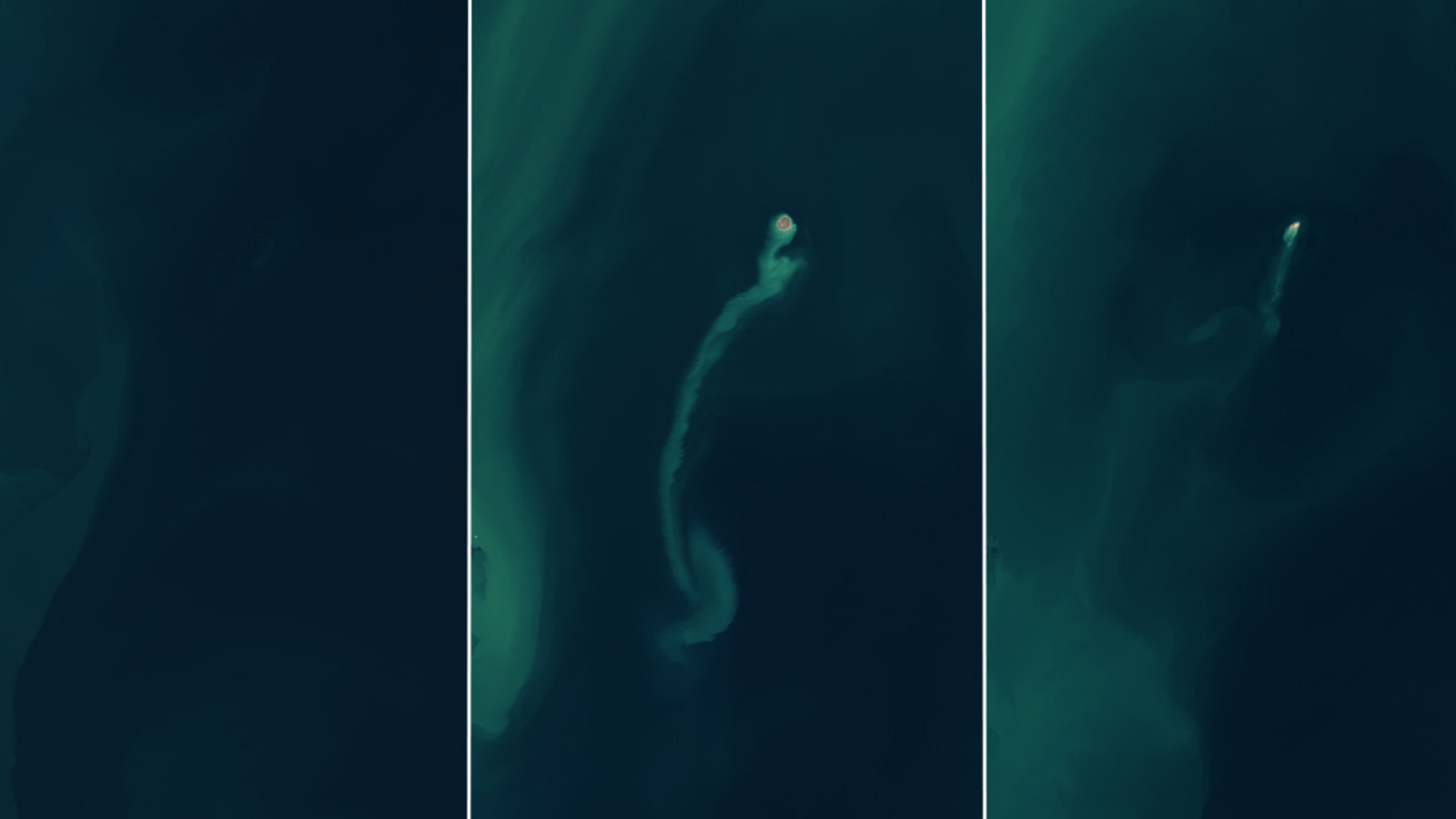Volcano Eruption Spotted from Space

The Anatahan Volcano erupted Wednesday morning, shooting a thick plume of ash 50,000 feet into the air and darkening the skies over this tiny U.S. territory in the Pacific.
According to the Washington Volcanic Ash Advisory Center, a series of low-level eruptions began April 4. A plume is visible from space in a satellite image.
Officials have placed Anatahan Island off limits until further notice, advising aircraft to exercise caution and avoid coming within 10 nautical miles of the area.
Ronald Dela Cruz of the Saipan Emergency Management Office said children were sent home early from school as ash fell on Saipan and Tinian, but there were no injuries or major disruptions reported.
The same processes that fueled this eruption created Anatahan and the other islands in the Northern Mariana Islands, according to NASA scientists. The arc of islands frames the eastern edge of the Philippine plate, a large section of the Earth's crust that floats on a layer of softer rock.
The Northern Mariana Islands, about 3,800 miles southwest of Hawaii, are home to about 70,000 people.
To the east of the Marianas, the slab of crust that carries the Pacific Ocean crashes against the Philippine Plate. In the clash, the colder, denser Pacific Plate sinks beneath the Philippine Plate, forming the Mariana Trench, a deep gorge that plunges to a depth of 10,920 meters (35,827 feet), the deepest known point in any ocean.
Get the world’s most fascinating discoveries delivered straight to your inbox.
Plummeting deep into the Earth, the Pacific Plate crumbles, and the pressure heats some of the breaking rock. The hot rock forces its way back to the surface through weak points in the overriding Philippine Plate, creating the arc of volcanoes that make up the Northern Mariana Islands.
Among the 14 small islands in the Northern Mariana Islands, there are 12 major volcanoes, including Anatahan.
Gov. Juan N. Babauta issued a health advisory after the recent eruptions began, urging residents with lung problems to stay indoors and warning people against drinking water contaminated with ash. Motorists were told to avoid driving in heavy ash, because it could clog engines and stall vehicles.
The eruption is at least the fourth in the past two years.
The Associated Press contributed to this report.
- The Science and History of Volcanoes
- Hawaii's Kilauea Volcano Poses Health Risk
- Rumbling Alaskan Volcano Prompts Warning
- Scientists: Volcano Monitoring Funds Low



